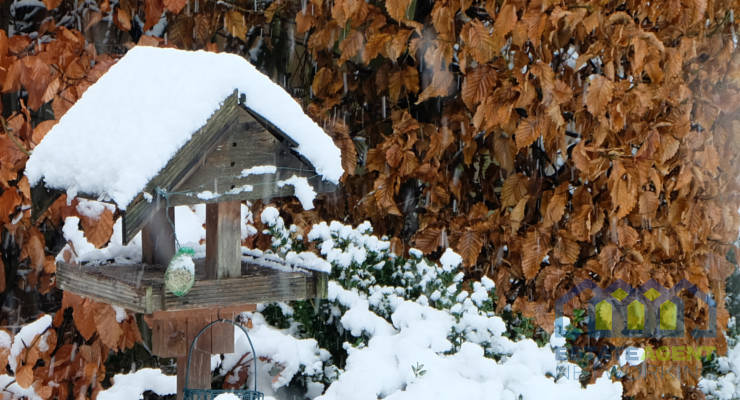6 Ways to Keep Wildlife from Messing with Your Property
Managing and maintaining a property takes hard work and dedication, especially if you have a front lawn and a backyard. And it can be frustrating to see your well-arranged garden get ruined when squirrels rummage through plants, rabbits steal vegetables, or groundhogs dig tunnels and leave holes.
Although one or two critters may seem insignificant, you might start noticing more unwanted guests if you don’t act quickly. If you suspect wildlife infestation, consider a home pest inspection to help you identify all the pests on your property.
Follow these six helpful tips and tricks to keep wildlife away and better manage your estate.
Identify the Wildlife In Your Property
The first step to permanently keeping wildlife away from your property is to identify common garden pests and how to control them. Different types of wildlife require different techniques to keep them away successfully.
For example, if you often see moles and rabbits feasting in your garden, a fence might not be an effective way to keep them out. Devices such as ultrasonic solar-powered repellents placed on the ground are more effective against moles and groundhogs. Fences, however, are effective against intruding squirrels, bears, and moose.
Remove Food Sources
One of the most common reasons wild animals invite themselves into your property is that they can smell food. If you enjoy eating dinners on the patio and have a habit of leaving the garbage bin open, this can attract wildlife into scavenging on your property.
Ants, flies, mice, squirrels, raccoons, and bigger wildlife like bears are attracted to fruits, vegetables, and leftover food. Always clean up, including crumbs, to avoid attracting them.
Don’t forget to cover your garbage cans properly. Find a container that can’t be easily destroyed or opened by bears. This will discourage them from returning to your property.
If you have crops on your property and are worried they might attract wildlife but don’t want to kill them, consider this next tip.
Build a Barrier
Physical barriers such as fences help keep most wildlife away from your property. This is especially beneficial if you have crops to protect. However, be familiar with the local fence laws in your area before building a fence.
There are many different types of fences to choose from. Here are some factors you must consider when building:
- Ensure your fence is at least 8 feet high to keep wildlife from climbing or jumping over it into your property.
- Consider the depth of your fence, keeping its bottom part a few inches underground to avoid burrowing animals from entering.
- Thoroughly research which material to get for your fence. Solid wood, vinyl, and metal are better for keeping wildlife out of your home.
- Maintain your fence regularly and reinforce the weak spots to preserve its effectiveness.
- Include Plants That Pests Don’t Like
- Did you know that pungent herbs and other plants can also deter wildlife from returning to your garden? Plants such as marigolds, lemongrass, and wormwood can keep snakes and mammals like rabbits, squirrels, and mice away from your property.
Meanwhile, tree species such as cedar and spruce can discourage bigger creatures like moose and deer from trespassing.
Seek Help from Professional Pest Control Specialists
Although it’s possible to handle minor pest infestations alone, it can be dangerous when wildlife is involved. Skunks and raccoons carry rabies which can be deadly to humans. It’s best to ask for the help of certified wildlife removal experts to humanely capture skunks, snakes and other dangerous critters.
Pest control experts can ensure they don’t return to your property by providing expert advice on keeping these wildlife at bay.
Lure Your Pest’s Predator
The saying “the enemy of my enemy is my friend” might apply in this scenario. Attracting the natural predators of pests is another way of discouraging them from returning to your property.
Some natural predators you can try luring into your property are birds of prey such as hawks, owls, and even eagles. These birds of prey can eliminate pests such as mice, rabbits, squirrels, moles, and groundhogs.
Having a pet cat or dog is another great way to eliminate wildlife. Dogs and cats can chase away unwanted visitors like rabbits, squirrels, and raccoons, preventing them from rummaging through your garden.
In Summary
There are several ways to keep wild animals away from your house. Identify the critters to determine how to repel them, clean up your dining area and cover the trash bins, build fences, add pest-repellent plants, hire a pest control expert and consider having pets that can hunt.
Depending on your location, landscape and preferences, one or two ways may be enough to keep wildlife away from your estate. Applying these techniques will give you peace of mind and ensure your and your family’s safety.
About the Author – Luqman Butter
Luqman has been a pest control technician for over 20 years. He is passionate about solving people’s pest and wildlife control problems through innovative, eco-friendly and humane methods. Luqman currently works for Pestend Pest Control. He believes that pest control is a science and feels that his function in his community is very important since he helps people live in peace without causing unnecessary harm to animals.









